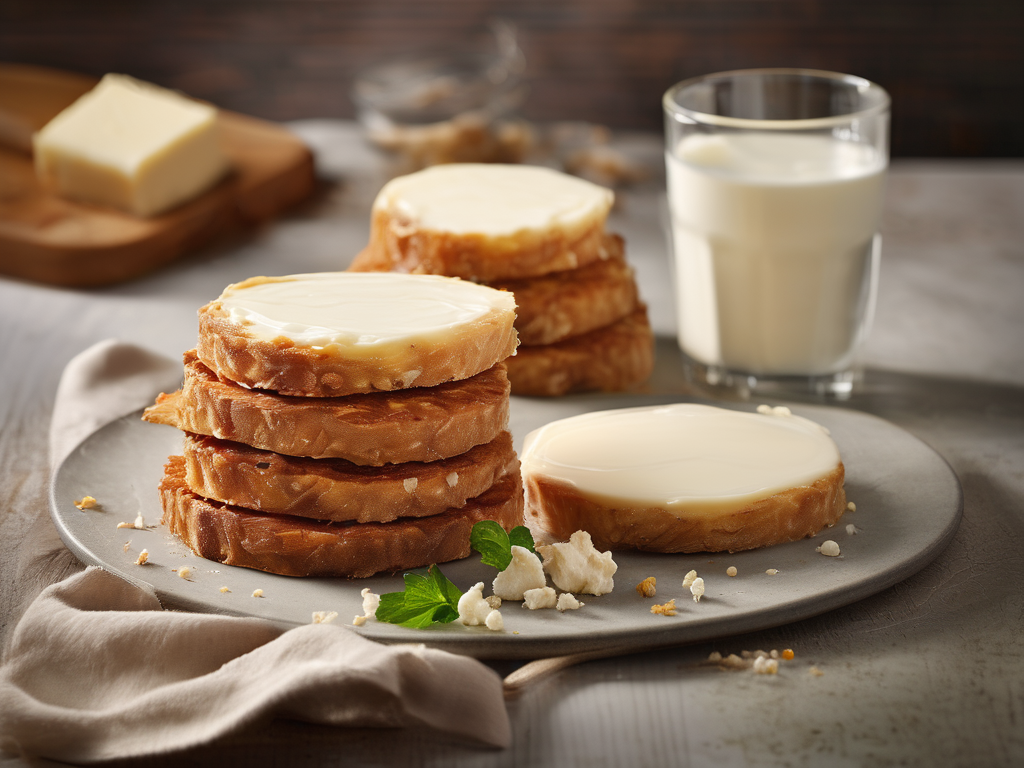
Understanding the Shelf Life of Buttermilk
Get Your Free Food Safety Cheat Sheet
30 most common foods with instant answers. Print it and stick it on your fridge—completely free!
Understanding the Shelf Life of Buttermilk
Buttermilk is a versatile dairy product that is used in various recipes, from baked goods to marinades. Understanding the shelf life of buttermilk is crucial to ensure its freshness and safety for consumption. In this comprehensive guide, we will explore how long buttermilk lasts, proper storage methods, signs of spoilage, and practical tips to extend its shelf life. (Buttermilk)
How Long Does Buttermilk Last?
Buttermilk, like other dairy products, has a limited shelf life. The expiration date on the packaging provides a general guideline for how long the buttermilk will remain fresh. However, several factors can influence the actual shelf life of buttermilk:
Factors Affecting Shelf Life
- Temperature: Buttermilk should be stored in the refrigerator at all times to maintain its freshness. Fluctuations in temperature can accelerate spoilage.
- Packaging: Sealed containers or bottles help protect buttermilk from contaminants and preserve its quality.
- Contamination: Proper handling practices, such as using clean utensils and sealing the container after each use, can prevent contamination and extend shelf life.
Proper Storage Methods
To maximize the shelf life of buttermilk and ensure its safety for consumption, follow these storage guidelines:
Refrigeration
- Store buttermilk in the coldest part of the refrigerator, ideally at temperatures below 40°F (4°C).
- Keep the buttermilk container tightly sealed to prevent exposure to air and odors from other foods.
- Avoid storing buttermilk in the refrigerator door, as temperature fluctuations can occur.
Freezing
- Buttermilk can be frozen to extend its shelf life. Transfer the buttermilk to an airtight container, leaving some room for expansion.
- Label the container with the date of freezing to track its shelf life.
- Thaw frozen buttermilk in the refrigerator before using it. Shake or stir the buttermilk well before using to restore its consistency.
Signs of Spoilage
It is essential to be able to recognize the signs of spoilage in buttermilk to avoid consuming expired or contaminated products. Common indicators of spoiled buttermilk include:
Visual Changes
- Curdling: Chunky or lumpy texture.
- Discoloration: Yellowish or off-white color.
- Mold: Visible mold growth on the surface.
Odor and Taste
- Sour smell: Rancid or sour odor.
- Off taste: Bitter or unpleasant flavor.
If you notice any of these signs, discard the buttermilk immediately to prevent foodborne illness.
Practical Tips to Extend Shelf Life
To prolong the freshness of buttermilk and reduce waste, consider the following tips:
- Use buttermilk before the expiration date for optimal quality.
- Avoid leaving buttermilk out at room temperature for an extended period.
- Use portioned containers to freeze buttermilk in smaller quantities for easier thawing.
- Consider using powdered buttermilk as a convenient alternative with a longer shelf life.
Conclusion
In conclusion, understanding the shelf life of buttermilk and implementing proper storage practices are essential for maintaining its quality and safety. By following the guidelines outlined in this guide, you can enjoy fresh buttermilk in your recipes while reducing food waste and ensuring food safety. Be vigilant in monitoring signs of spoilage and handle buttermilk with care to maximize its shelf life. Buttermilk is a valuable ingredient that can enhance the flavor and texture of various dishes, so make the most of its shelf life by storing it correctly and using it promptly. (Buttermilk)
Related Posts
Here are some other articles you might find helpful:
Authoritative Food Safety References
These agencies and university labs inform every tip and health precaution we publish.
USDA FoodKeeper – Cold Storage Guidelines
Official refrigerator, freezer, and pantry timelines maintained by the U.S. Department of Agriculture.
Visit USDA FoodKeeperFDA Produce Safety Rule & Grower Guidance
Field-to-fridge handling practices that prevent contamination of fruits, vegetables, and leafy greens.
Visit FDA Produce SafetyCDC Foodborne Illness Prevention Hub
Surveillance-backed guidance on pathogens, symptoms, and steps to reduce foodborne illness risk.
Visit CDC Food SafetyUC Davis Postharvest Technology Center
University research detailing optimal storage atmospheres for produce after harvest.
Visit UC Davis PostharvestPenn State Extension – Home Food Preservation & Safety
Peer-reviewed extension bulletins on safe canning, chilling, and reheating practices.
Visit Penn State ExtensionGet Your Free Food Safety Cheat Sheet
30 most common foods with instant answers. Print it and stick it on your fridge—completely free! Want more? Upgrade to the complete guide with 70+ foods.
Scan your food directly and get instant safety info using our AI-powered camera feature.